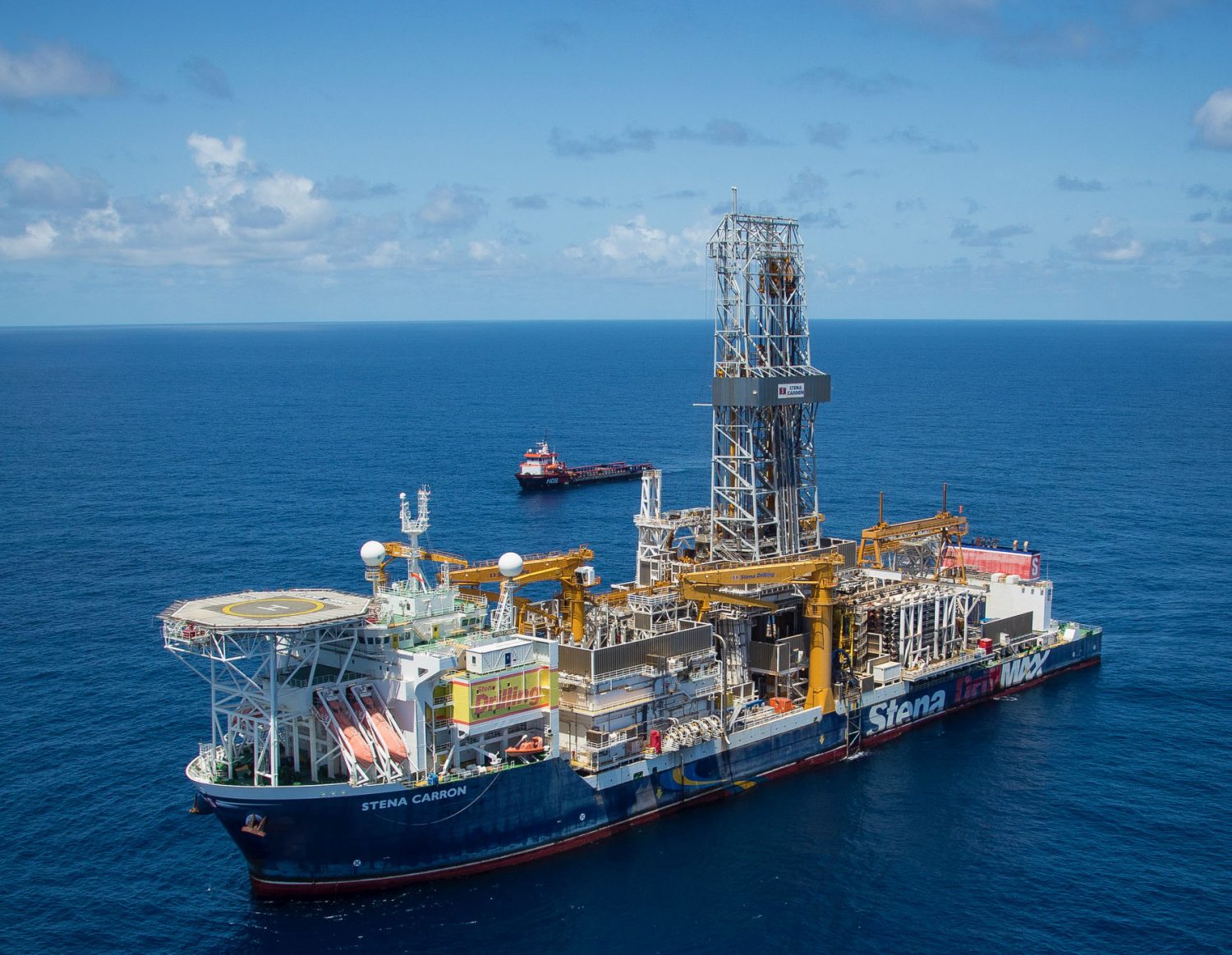With seven finds in three years, ExxonMobil’s subsidiary, EEPGL has begun its latest quest for more oil here as it last week began drilling a new exploration well named Longtail-1.
The company’s Senior Director, Public and Government Affairs, Kimberly Brasington told Stabroek News that Longtail-1 is a new prospect and that the well was spud on Saturday.
In a notice to mariners, Guyana’s Maritime Administration Department (MARAD) informed that the drilling operation at the site is expected to last for three months. During the operations the Stena Carron Drill Ship and some ten other vessels will be used.
Warning mariners to stay clear of the vessels and navigate with caution when in the vicinity, MARAD explained that the drill site is approximately 106.3 nautical miles from the coast of Guyana and covers an area of one square kilometer.
Following the announcement of its dry well, Sorubim last month, the company had stated that work on Longtail would soon commence.
The Sorubim drill site and the offshore staging area were approximately 83 nautical miles and 53 nautical miles, respectively, from the coast of Guyana, which is closer than previous wells. Sorubim covered an area of four square kilometres by two square kilometres.
Like at Sorubim, EEPGL did not find commercial quantities of hydrocarbons at its Skipjack well, also in the Stabroek Block.
However, the company has had a string of finds here declaring that it has “world-class” discoveries that are estimated to total more than 3.2 billion recoverable oil-equivalent barrels and that is minus its largest find in January.
According to Exxon’s project overview of works in the Stabroek Block, the Liza-1 well discovery was announced in May, 2015 following drilling. The Liza-2 well was drilled and tested in July, 2016, while the Liza-3 well was drilled in October, 2016, confirming a world-class resource discovery in excess of 1 billion oil-equivalent barrels. (Appraisal drilling at Liza-3 identified an additional high quality deeper reservoir directly below the Liza field, which is estimated to contain resources between 100 and 150 million oil-equivalent barrels.) The Liza-4 well was drilled in March, 2017 and more than 197 feet of high-quality, oil-bearing sandstone reservoirs, which will underpin a potential Liza Phase 2 development were encountered.
The Payara-1 well discovery was announced in January, 2017. Payara was drilled in a new reservoir, where more than 95 feet of high quality, oil bearing sandstone reservoirs were encountered.
The Payara-2 well discovery was announced in July, 2017 and the company explained that Payara-2 encountered 59 feet (18 meters) of high-quality, oil-bearing sandstone reservoirs, with its discovery estimated at approximately 500 million oil-equivalent barrels.
Following its Liza and Payara finds, Exxon announced an oil discovery at its Snoek-1 well in March, 2017. The company says it encountered more than 82 feet of high quality, oil bearing sandstone reservoirs.
Exploration of the Turbot well followed Payara and in October of last year 75 feet (23 meters) of high-quality, oil-bearing sandstone reservoirs were encountered.
Then in January of this year a major oil discovery at the Ranger-1 well in the Stabroek Block, which is being called the largest single find since it began exploration offshore Guyana, happened for Exxon.
The finding of more than 230 ft of high-quality, oil bearing carbonate reservoir at the well was the sixth discovery made by the company here since 2015, following the previous “world-class discoveries” at the Liza.
Successful drilling continued when in February of this year an announcement of yet another “major find” at Exxon’s Pacora-1 well was made by Minister of Natural Resources Raphael Trotman. The Pacora-1 drill site which covers an area of one square kilometer is 107 miles from the coast of Guyana and 4 miles from the Payara well.

